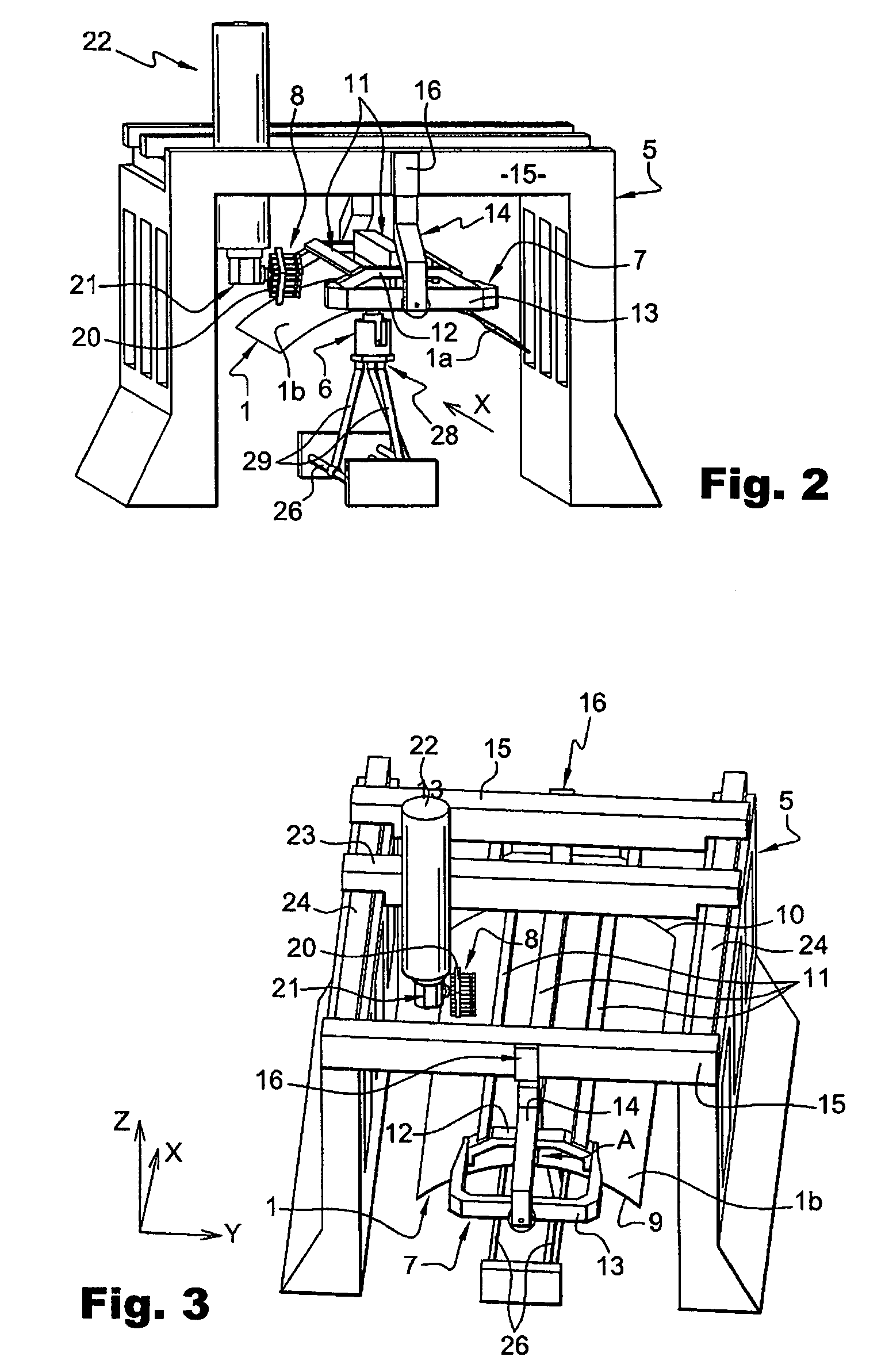Process and device for machining by windowing of non-deformable thin panels
a technology of non-deformable thin panels and windowing, which is applied in the direction of computer control, program control, instruments, etc., can solve the problem that the positioning according to just isostatic principles is not sufficient to ensure the effect of the
- Summary
- Abstract
- Description
- Claims
- Application Information
AI Technical Summary
Benefits of technology
Problems solved by technology
Method used
Image
Examples
Embodiment Construction
[0069]FIG. 1 illustrates schematically the principle of isostatic positioning of a panel 1 having a double curvature.
[0070] Panel 1 is a flexible, thin, non-deformable panel, e.g., a metal panel for covering an aircraft fuselage and has been shaped beforehand in a known manner by drawing on a convex mold.
[0071] As described above, such a panel 1 displays variations in thickness over its entire surface. The geometrically known surface of panel 1 is the concave internal surface 1a, which was in contact with the drawing mold. The reference surface is the opposite surface 1b (FIG. 2 and the following figures) and is convex, corresponding to the external wall of the fuselage that will be produced by employing the panel.
[0072] Since panel 1 is machined on its geometrically known surface 1a, whereas the reference surface is surface 1b and the thickness of the panel has variations which are not known, this obviously presents a machining problem, particularly if one wants to create recess...
PUM
| Property | Measurement | Unit |
|---|---|---|
| Shape | aaaaa | aaaaa |
| Area | aaaaa | aaaaa |
| Deformation enthalpy | aaaaa | aaaaa |
Abstract
Description
Claims
Application Information
 Login to View More
Login to View More - R&D
- Intellectual Property
- Life Sciences
- Materials
- Tech Scout
- Unparalleled Data Quality
- Higher Quality Content
- 60% Fewer Hallucinations
Browse by: Latest US Patents, China's latest patents, Technical Efficacy Thesaurus, Application Domain, Technology Topic, Popular Technical Reports.
© 2025 PatSnap. All rights reserved.Legal|Privacy policy|Modern Slavery Act Transparency Statement|Sitemap|About US| Contact US: help@patsnap.com



